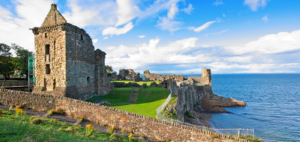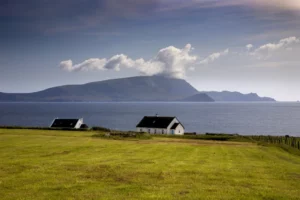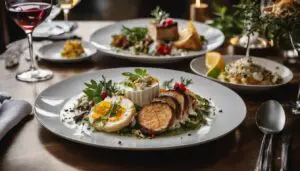Pookas: Digging into the Secrets of this Mischievous Irish Mythical Creature
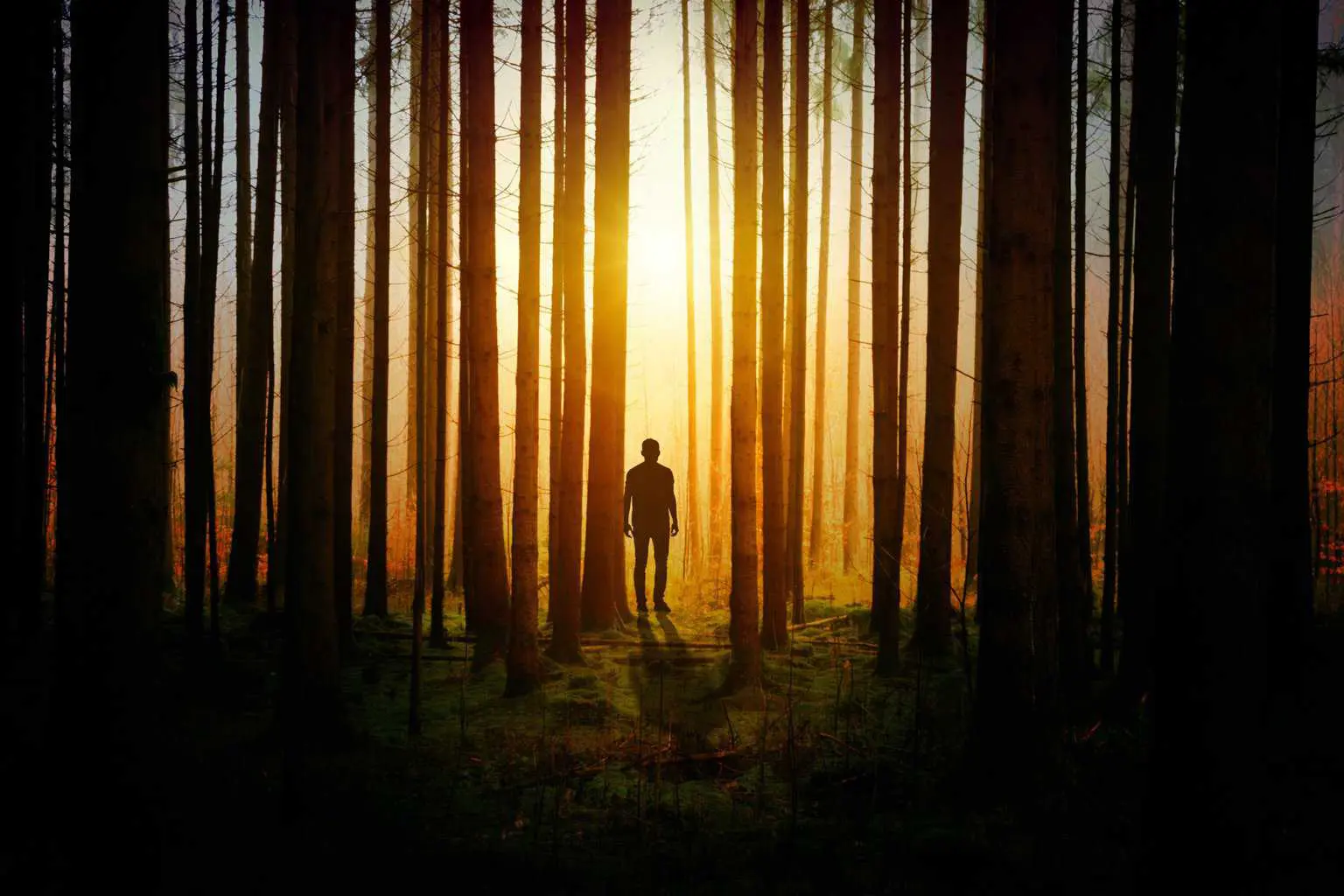
Updated On: April 01, 2024 by Ciaran Connolly
Every country has its share of legends, myths, and traditional stories, and Ireland is no different. Ireland’s history dates back thousands of years. The intriguing part, however, is that countless myths and legends have been preserved throughout this long history.
One of these myths is the Legend of Pookas. Stories of these creatures have been embraced by the Irish for centuries. These mysterious beings, with their shapeshifting abilities and mischievous tendencies, have long held a prominent place in the rich oral traditions of Ireland.
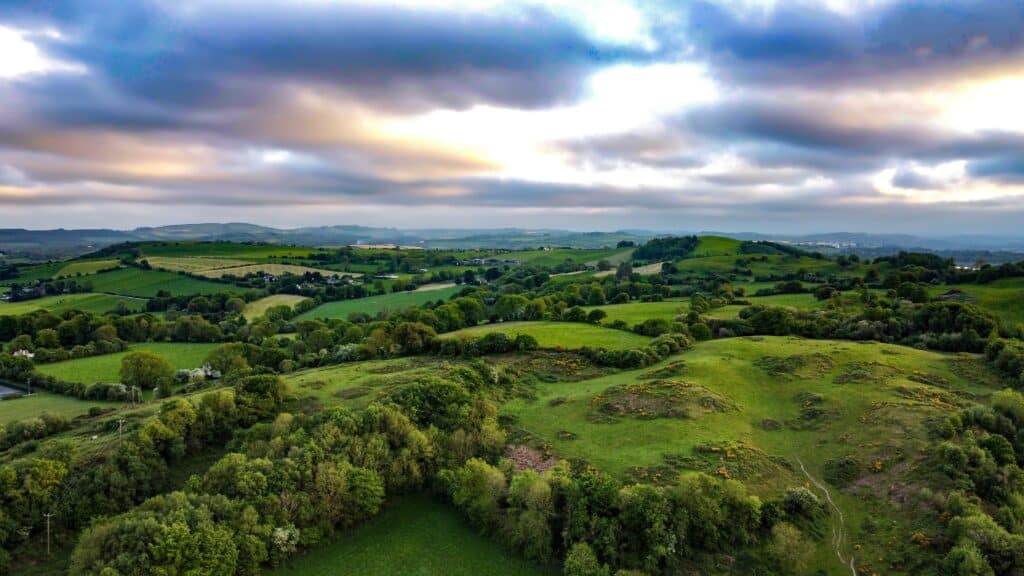
Emerging from the shadowy corners of the Emerald Isle, the legend of Pookas weaves a web of intrigue, enchantment, and cautionary tales that continue to bewitch and bewilder those who delve into the realm of Irish lore.
Whether or not you think that the tales of Pookas make sense, there is no doubt that they’re exciting creatures in Celtic mythology.
Table of Contents
Irish Mythology
Ireland’s history dates back hundreds of years beyond the arrival of Christianity. Before Christianity took over Ireland, many people held Celtic beliefs. Not all of the cultural heritage survived the religious transformation and the religious intolerance that came with the arrival of the Christian faith.
Medieval Irish literature has preserved most Irish cultural heritage, as the Celts did not record their history using written forms.
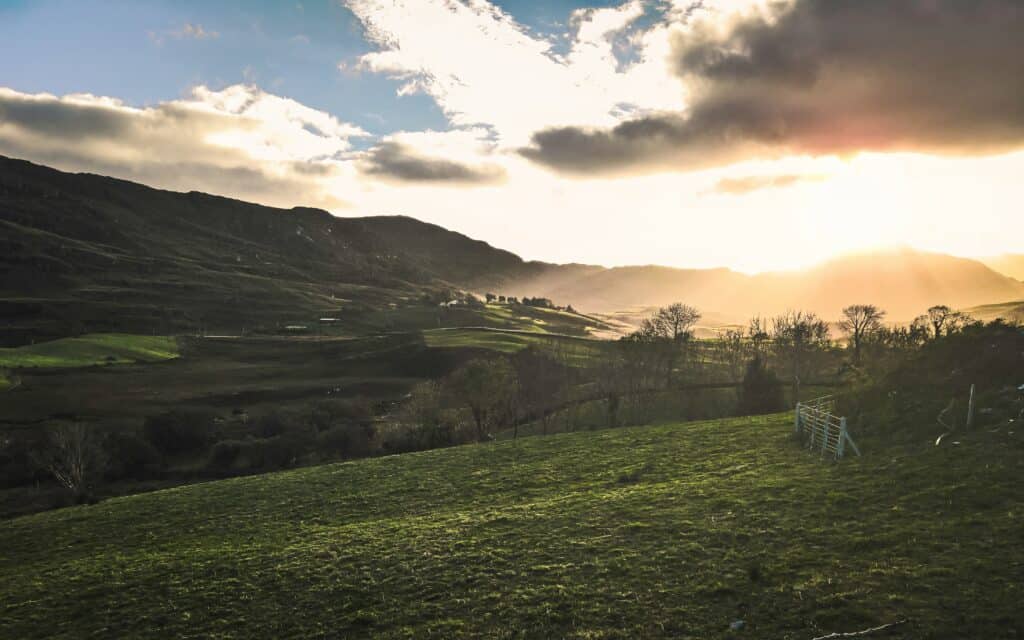
Some essential texts and materials never made it into modern times, and others were never documented. However, many significant pieces of medieval Irish literature are kept within the different divisions of Celtic mythology.
Early Irish literature is considered one of the oldest forms of slang literature in Western Europe and was passed down for centuries by word of mouth.
There are four primary cycles of Irish literature in which folklore is preserved: the Mythological Cycle, the Ulster Cycle, the Fenian Cycle and the Historical Cycle. Irish folklore preserved other parts that don’t belong to any of the four cycles, but these are the main categories under which Celtic myths fall.
The Definition of Pooka
Pronounced as “Poo-ka,” Pooka is the Irish word for goblin, spirit, or sprite. Other names for Pookas include púca, phouka, phooka, phooca, puca, plica, phuca, pwwka, pookha or púka. In modern Irish, ‘Púca’ is the word for ghost.
The Pooka are mythic and magical creatures that can be shapeshifted; they mainly take the forms of different animals. The legend of Pookas goes back to Celtic myths of the Irish lands. Some theories suggest that “pooka” derives from the Scandinavian word for nature spirit: Puke.
Believed to belong to the fey race (creatures known for their supernatural powers and ability to connect with nature), Pookas are commonly described as mischievous but benign creatures who can change their form. They originated from the myths and folkloric stories of Scotland and Ireland.
Folks all over Celtic cultures in Northwestern Europe knew different versions of the legend of Pooka. This was because stories were preserved by word of mouth and, therefore, changed naturally over time.
For instance, in Cornish cultures, this creature was called the Bucca. A Bucca was a water spirit, goblin, or merman who lived in mines and coastal areas during storms. In Welsh folklore, it was called a “Pwca.” As for the Channel Islands (between England and France), people knew of it as the Pouque. They believed that the Pouque were fairies who inhabited the areas around the ancient remnants.
The Pooka was mysterious by nature, so everything from its form to its abilities and intentions varied in each legend and region it occupied. They were rumoured to be found in rural communities or marine areas and were linked to the natural world.
The Origins of Pooka
Some people claim that Pooka was a European God named “Boga.” It is believed that Boga was a God of nature, similar to Pan, the Greek God of nature, flocks, the wild and shepherds. Some language specialists argue that the word “Bog” from the Slavic language derives from the name “Boga. Bog means omnipotent and was the Slavic word for ‘God’.
Some myths suggest that Pookas are the descendants of the Tuatha Dé Danann. The Tribe of Danu, as they were also known, were the ancient Celtic Gods and Goddesses of Ireland. According to myth, they were supernatural figures who once lived in Gaelic Ireland long before our ancestors’ arrival.
The deities were famous for their magical powers and were worshipped as Pagan Gods before the arrival of Christianity in Ireland. They even had their ancient Irish festivals but were driven underground and, over centuries, became the fairies that feature in much of Irish superstition.
In Celtic mythology, ‘fairy’ was an umbrella term for many different supernatural creatures, including the banshee, the leprechaun and even some mythical Irish monsters. So, it would make sense that the Pooka also falls under this classification.
Les Trois Freres Cave Painting
Some suggest that the first evidence of the Pookas’ existence was discovered from paintings in caves of the Pyrenees mountains in southwest Europe. They were found in a cave called Les Trois Freres in southwestern France.
The cave is famous for its wall paintings. One of the most well-known paintings in Les Trois Freres depicts a man wearing the skin of a horse or a wolf with horns upon his head. This specific painting is also referred to as the Sorcerer.
There are many different opinions about these cave paintings. Some believe that the paintings on the walls of Les Trois Freres represent Shamans. Others suggest that the drawings illustrate Pookas (a stag Pooka, to be more specific). Others suggest that the painting could be of a horned God such as Cerrunos, the Celtic God of the hunt and the forest.
There are even some disputes about the validity of the discovery, which, if nothing else, ironically mirrors the confusion and mischief which the Pooka has created in mythology.
Shamans
Anthropologists believe that Shamanism was used to communicate with spirits in the other worlds. Shamanism is a religious belief, and a shaman is a spiritual person who is regarded as having access to powers to interact with the worlds of both benevolent and mischievous spirits.
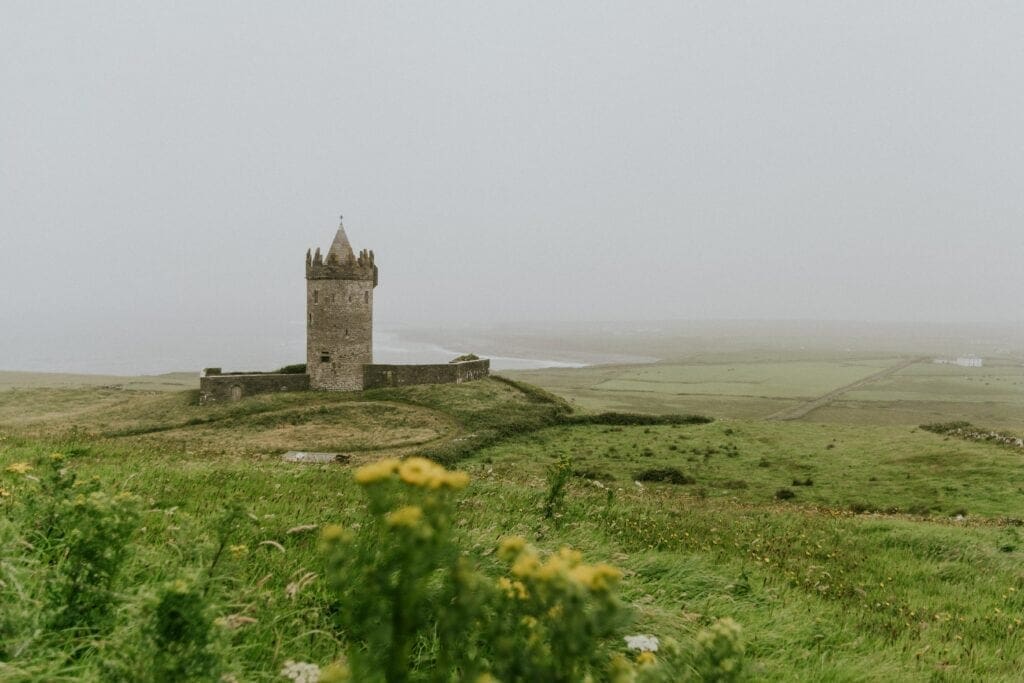
According to Shamanism, a shaman’s spirit can leave their body and travel to other worlds. They can also have visions or dreams that can reveal specific messages from the worlds of spirits. In return for passing these messages, the spirits guide the shamans through their journey in the spirit world.
Throughout the spiritual rituals, a shaman enters a being of which they can reach a curative and soothsaying state. In this state, they can cure any sickness caused by evil spirits.
What can we Learn from the Ambiguous Origin of the Pooka?
There are some claims that Pookas were worshipped in ancient Egypt as Gods on their own, but there is no substantial evidence to support this; it is more than likely a coincidence. All indications say that the legends of the Pooka have Irish and Welsh origins, evidenced by the fact that the word “Pooka” itself is originally Irish.
Throughout history, humanity has kept evolving. Part of this development is represented in art and mythology. Art can tell experts more than you may think about the people who created it. Animals have always played a big part in mythology because of their role in people’s daily lives, and they have also been featured predominantly in art.
The most logical explanation is that the Pooka originated from an amalgamation of some or many of these concepts. Legends were constantly changing, and people built different stories around them. There may have even been some rituals that we’ve never discovered.
At some point, these stories became a part of people’s traditions and beliefs before ultimately fading into mythology.
Similar Shapeshifting Mythological Creatures
Multiple creatures in Irish mythology share characteristics similar to those of the Pooka.
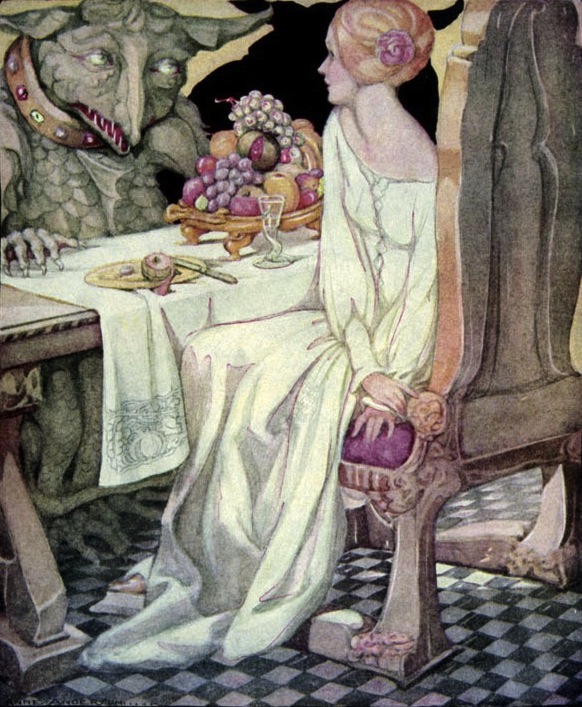
Kelpies
A Kelpie is a pixie horse of Scottish origin. It translates to “the Lowland name of a demon in the shape of a horse.” In myths, Kelpies are horses that escaped from their faerie masters and went to hide in the water. This explains why Kelpies have the abilities of water creatures; they can swim and even breathe underwater.
A Kelpie is so strong that it can pull a massive boat independently. Like a Pooka, a Kelpie sometimes takes a person upon their backs. While the Pooka will not harm someone, a kelpie will try to take them back underwater.
Most notably, Kelpies can take a human form just like a Pooka, but they do it to catch prey. Kelpies manage to appear in the form of a person to seduce or trick a lone traveller. Kelpies vary in colour from white to dark black and sometimes have a pale, glassy green colour.
Both Pookas and Kelpies belong to the goblin race in some mythological cultures. They are both associated with marine locations, but a Kelpie is always more fierce and evil than a Pooka.
The Morrigan
The Morrigan, a prominent figure in Irish mythology, is a complex and multifaceted character known for her shapeshifting abilities. She is often called a goddess, a war deity, and a harbinger of death and fate. One of her most intriguing aspects is her capacity to change her form, a power that adds depth and mystery to her role in Irish folklore.
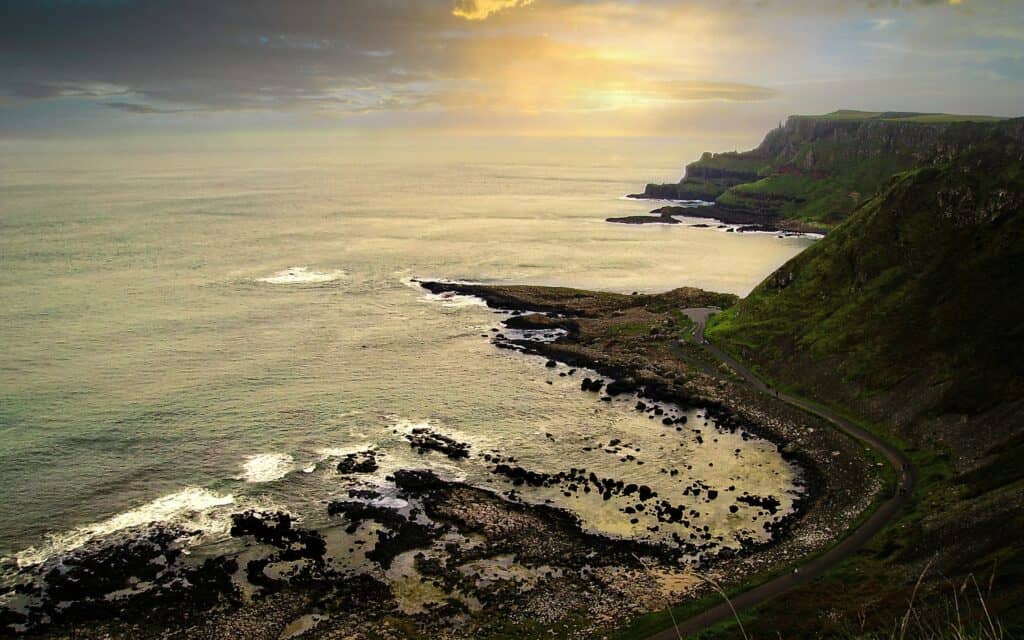
In Irish mythology, the Morrigan is frequently depicted as a shape-shifter who can assume various forms. Her shapeshifting abilities allow her to appear as a crow, raven, or beautiful woman, depending on her intentions and situation.
As a crow or raven, she is associated with battlefields. She would fly overhead, cawing ominously and foretelling doom and death. This association with carrion birds underscores her connection to war and her role in determining the outcomes of conflicts.
Furthermore, Morrigan’s shapeshifting abilities reflect the fluidity of Irish mythology itself, where boundaries between the mortal world and the supernatural are porous. Her transformations serve as a reminder of the blurred lines between the natural and the paranormal.
Morrigan’s ever-changing forms make her a captivating and enigmatic figure in Irish folklore, embodying the unpredictability and complexity of the human experience and the world of myth.
Each-uisge
Coming from Scottish origin, Each-uisge, also known as Aughisky or Echushkya, is a water spirit. Each-uisge’s literal meaning is “water horse”, and the creature is very close to the Kelpie but even more evil. According to folk expert Katharine Briggs, Each-uisge is “perhaps the fiercest and most dangerous of all the water-horses.”
People often mistake Kelpies for the Each-uisge, but there is an important differentiating factor between the two creatures. According to tales, Kelpies live in rivers while the Each-uisge lives in the sea or lakes.
The two are similar, however. Like a Pooka, an Aughisky can shapeshift into ponies, horses, and giant birds. Additionally, the Echushkya can take the shape of a human. Furthermore, if a man is riding on the back of either creature, he’s safe from danger as long as they’re not close to water; this is because they take their victim to the deepest point in the nearest body of water.
The Legend of the Pooka in Irish Folklore
Legend has it that a Pooka, who likes to live in mountains and other similar areas, shares the main characteristics of many animals. However, since Pooka is mischievous, they usually take any form that benefits them.
A Pooka is one of the most feared creatures in the history of Irish folklore. In most folktales, narrators mainly connect Pookas to mischief, black magic, damage, and sickness. However, they can bring fortune as well as misfortune to humans.
Pookas in Different Regions
Tales of the Pooka differ from one area to another. In some regions, communities respect Pookas more than fear them. While most people did not believe in Pookas historically, they sometimes talked about them to keep their children well-behaved.
Some stories state that Pookas show up, primarily in November, to give people advice or to warn them about some unpleasant news that might happen to them. November marked the beginning of the Celtic year, and the Pooka was believed to advise people on the coming year.
Just as the beliefs of how a Pooka would treat humans differ, the stories and beliefs of how a Pooka would look also differ. Their appearance and temperament in the legends mainly vary from place to place.
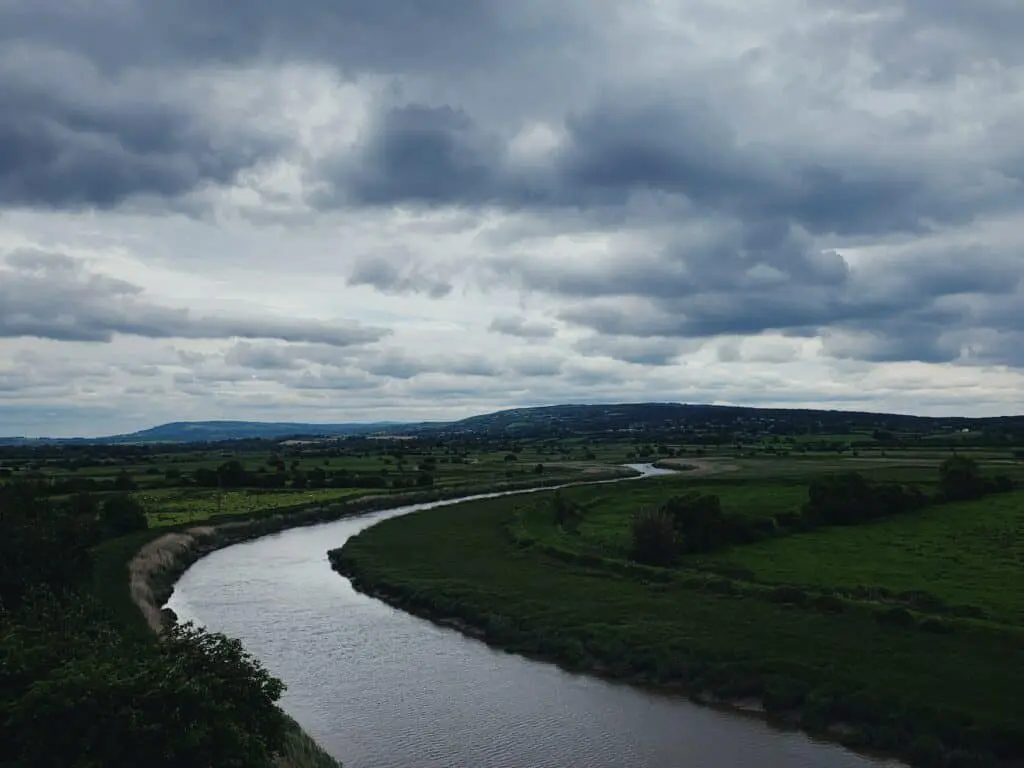
In County Down, the Pooka would take the form of a tiny malformed hobgoblin and ask for a share of a farmer’s yield. In County Laois, they took the shape of a scary, hairy boogeyman. In Roscommon, a Pooka was said to be a black goat. In Waterford and Wexford, the Pooka is a massive eagle with an enormous wingspan.
Characteristics of Pookas Vary from One Place to Another
Contrasting with the fact that a Pooka’s form would differ from one region to another, Pookas have three main common characteristics. First, they either have red or sparkly golden eyes. Second, they have dark black fur or hair. And above all, Pookas can speak, so they prefer taking human forms.
Simply put, Pookas take human form to trick people, chat with them, give them advice, or even give forecasts for the upcoming year.
In the southern part of County Fermanagh, people gathered on specific hilltops. They waited for a speaking horse, which inhabitants had noticed before on the occasion of the famous Bilberry Sunday. Also, in County Fermanagh, the top of Binlaughlin Mountain is known as the “peak of the sneaking horse.
In Belcoo, County Fermanagh, St. Patrick Wells were said to be called “Pooka Pools” thousands of years ago, but religious Christians changed their name to “St. Patrick Wells.” The Liffey River has created a waterfall called Poula Phouka in the Wicklow Mountains. This translates to “The Pooka’s Hole.”
The Only One Who Ever Rode on a Pooka
Pookas have the power and the ability to shift their guise. As per folklore, Brian Boru, the High King of Ireland from 941 to 1014, is the only person to ride on top of a Pooka and survive. According to legend, Brian was a courageous man and was the only one who got to ride on top of a Pooka.
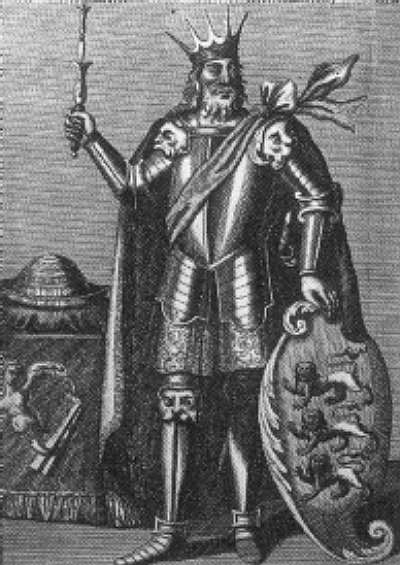
Brian had the guts to stay on the Pooka’s back long enough to force it to surrender to him. Stories say that King Brian also forced the Pooka to agree on a couple of terms before he released it.
First, Brian got Pookas to agree that they would never hurt Christians or mess with their properties. Secondly, Pookas had to agree that they would never assault an Irishman except for those with wicked intentions.
Though the Pooka agreed to the terms, it seems like they’ve forgotten about their promises over the years when we see their mischievous presence in other myths.
Pookas Day
Pookas Day is mainly related to Samhain, an end-of-year celebration of the Gaels. The Gaels are an ethnolinguistic group based in northwestern Europe and a part of the Celtic language that comprehends Irish, Manx, and Scottish Gaelic. Some people know 1 November as Pookas’ day.
As the tradition goes, when it’s time for farmers to harvest their crops, they must leave some stalks behind to reconcile with the Pooka. This is what the public calls the “Pooka’s share”. No one can eat the Pooka’s share because no one wants to fall victim to their wrath!
Furthermore, the Pooka spits on some fruits in some places, mainly when the frost kills berries. This usually happens as November begins. The dead berries indicate that a Pooka poisoned the fruits, and no one will be able to eat them.
When rain falls on a sunny day, it indicates that Pookas go out on this specific night to poison crops.
Douglas Hyde, the folklore specialist, described the Pooka as a “plump, sleek, terrible steed” that walked down from one of Leinster’s hills and talked to the people on 1 November. According to Hyde, the Pooka provided them with “intelligent and proper answers concerning all that would befall them until November the next year”. As a thank you, the people used to leave gifts and presents on the hill for the Pooka.
Pookas in Pop Culture
Various Pookah stories have made it to the publishing and cinema industry. Starring the renowned actor James Stewart in 1950, the movie Harvey (inspired by the play of the same name) is the most famous film adaptation of the Pooka legend. The story is about a Pooka named Harvey, who takes the shape of a six-foot white rabbit.
The six-foot, three-and-a-half inches tall rabbit becomes best friends with a man named Elwood P. Dowd (played by Stewart) and starts playing tricky games with people around him. Unlike the play, which featured the Pooka as a character played by an actor, Harvey is never shown on screen in this film.
This adds an element of mystery to the plot. Although the Pooka remains unseen, plenty of paranormal activities in the film strongly suggest that Harvey is honest. Harvey won an Oscar in 1951. Josephine Hull won the award for Best Supporting Actress, while James Stewart was nominated for Best Leading Actor.
Shakespeare described the character of Robin Goodfellow as ‘sweet Puck’ in his 1595 play ‘A Midsummer Night’s Dream’. This directly references the Pooka, and the character is a prankster, only solidifying the connection.
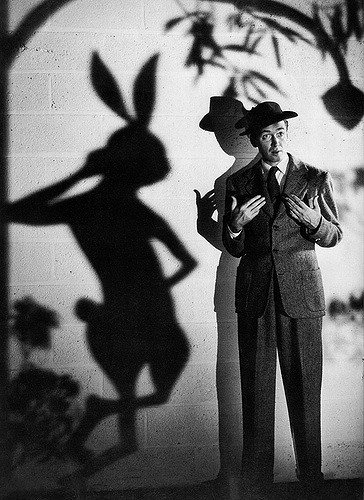
While this is a bit more of a stretch, the Cheshire Cat from ‘Alice in Wonderland’ can be compared to the Pooka as he is a trickster with supernatural powers and can disappear at will, but is ultimately benign. The creature takes the form of an animal and can shapeshift, too.
The Pooka is also represented in many other forms of media, including the YA novel series Merry Gentry, the anime show Sword Art Online, and the digital game Cabals: Magic & Battle Cards.
In most works, artists draw the Pookah as a wicked creature taking the form of an animal, usually a rabbit. In ‘Knightmare’, the well-known children’s program from the late eighties/early nineties, the program’s creators represented Pookas as crazy creatures.
The darker interpretation of a Pooka also applies to 2001’s “Donnie Darko”, a psychological sci-fi thriller which portrays a scarier version of the creature. Donnie Darko’s Pooka is similar to a horror movie version of Harvey, the six-foot-tall rabbit we mentioned earlier, and the similarities are probably not a coincidence.
On the other hand, some artists design the character of the Pooka as a weird but harmless creature. ‘The Spiderwick Chronicles’, a famous children’s fantasy book series, follows this archetype. There is also a hurling club in Pittsburgh, Pennsylvania, known as the Pittsburgh Púcas. Their team crest even includes their interpretation of the púca!
Some theories show that the Pooka inspired the Easter Bunny and the Boogey Man to varying degrees. In reality, the Púca is more than likely just one of countless interpretations of these figures, as so many cultures have their version of the creature.
When Pookas Started to Vanish from the Emerald Isle
As Christianity started to spread around the island of Ireland, the beliefs of animal worshipping, including the idea of Pookas being Gods, started to vanish gradually. Like many other supernatural pagan beings, the myth of the Pookah was unacceptable to the new faith and was subsequently vilified or forgotten over time.
The new religion changed how people viewed Pookas; they were transformed from supernatural creatures and deities into obscurity. That’s when the legend of Pooka started to lose significance and vanish.
The legend of the Pooka somewhat survived as an Irish boogeyman. Parents would use the creature as a warning to scare Irish children into behaving well.
Pookas Never Say Goodbye
According to myth, the Pooka shows up here and there, now and then, to different people in different places. The legend goes:
If you have Celtic blood running in your veins, Pookas will always be watching you. They’ll also try to trick you when they can. They will stare, smile, and even chat with you. While annoying, the presence of the Pooka is rarely harmful.
If you move into a new house, a Pooka may appear to tell you stories of the people who lived there before you and will, of course, know everyone who once held the house’s property. They will know who lost their land in the area and who lost his fortune or money.
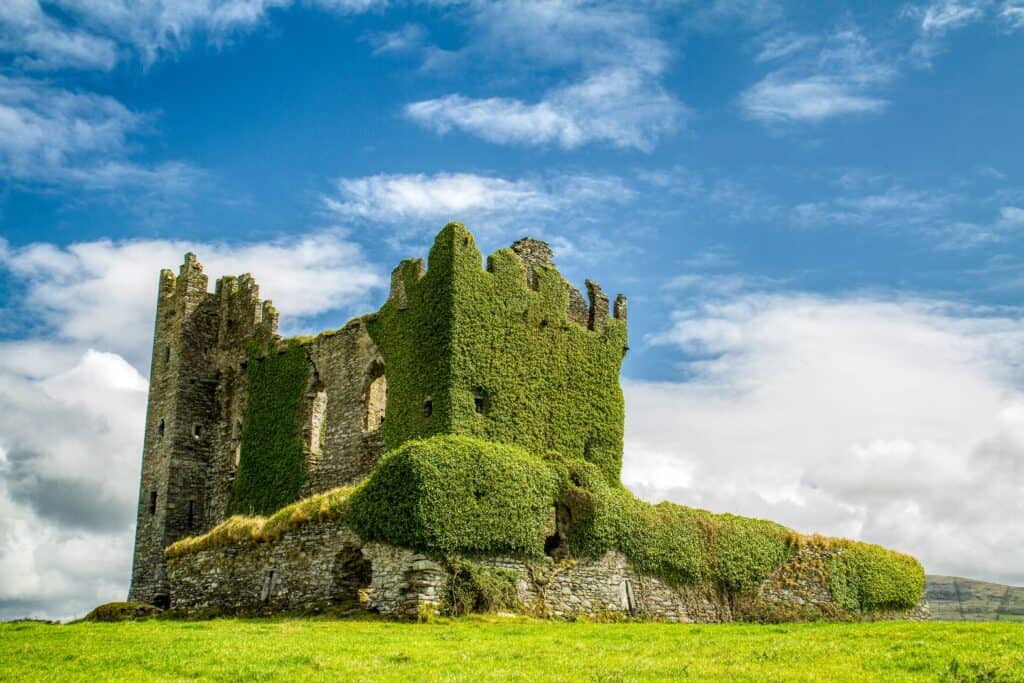
Like gambits in chess, the Pooka may reveal their love of trickery and mischief, giving up the element of surprise but igniting a sense of dread in the person who has crossed their paths. They may even tell you what is to come over the next year.
You probably know by now that Pookas have the ability of human speech. It’s important to realise that one might lose track of time during a conversation with a Pooka. It is not until the conversation, which could last for a few hours, is over that you will wonder what happened and whom you were talking to.
What’s more important than the Pooka’s ability to talk is that they also leave suddenly. In other words, Pookas never say goodbye and will leave you wondering if the encounter happened.
Whether the stories and myths of Pookah were real or not, there is no doubt that they had a fair share in affecting the Irish civilisation, traditional beliefs, and culture. The Pookah is one of the most feared mythological creatures in Irish culture; however, there is no proven evidence that it harms people.
Just remember, the games will begin once a Pooka finds a way to you. So, beware!
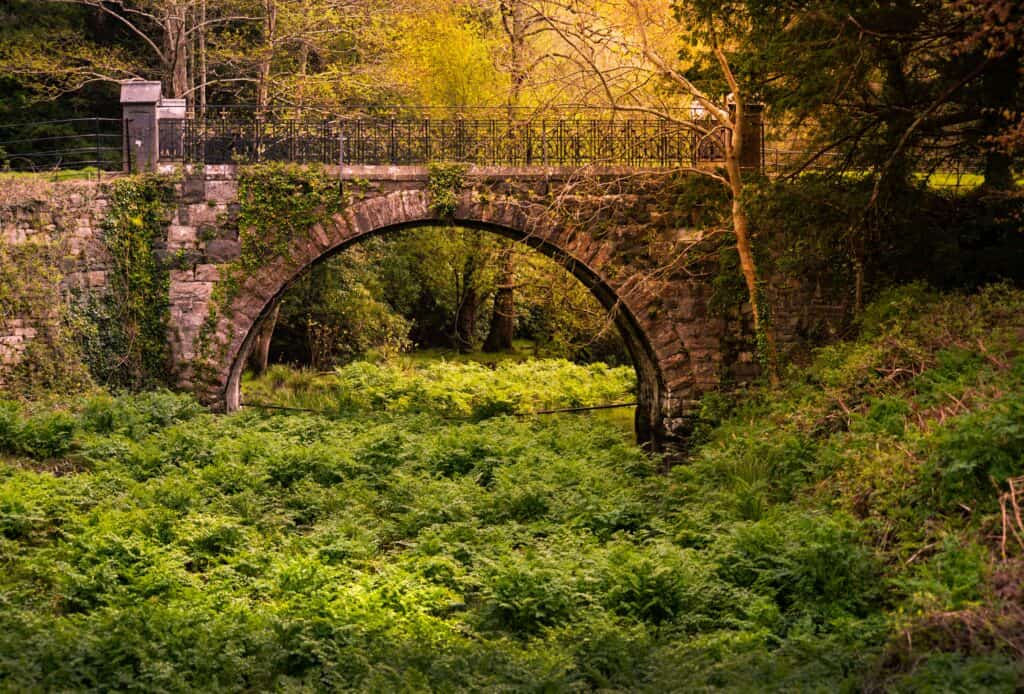
Irish Pookas Are Fascinating Creatures in Celtic Folklore
The legend of Pookas in Irish folklore and mythology is a captivating and enduring aspect of Ireland’s rich cultural heritage. These mischievous creatures have fascinated and frightened generations of storytellers and listeners, reflecting the relationship between humans and the natural world.
Through their tales, the Pookas remind us of the importance of respecting the land and its inhabitants and the consequences of arrogance and neglect. As we delve into the world of Irish folklore, we gain insight into the deep connection between the Irish people and the land they call home, where myths and legends weave themselves into the vibrant and enduring culture.
The Pookas are not just creatures of the night but enduring symbols of Ireland’s mystical and timeless spirit.
If you like this blog, then why not check out some of our other Irish blogs, such as:
Irish Blessings, The Bodhran Drum’s Impact on Irish Traditional Music, Irish Wedding Traditions, Irish Legends and Tales of The Irish Mythology, The Children of Lir: A Fascinating Irish Legend, The Curious Case of Irish Curses


